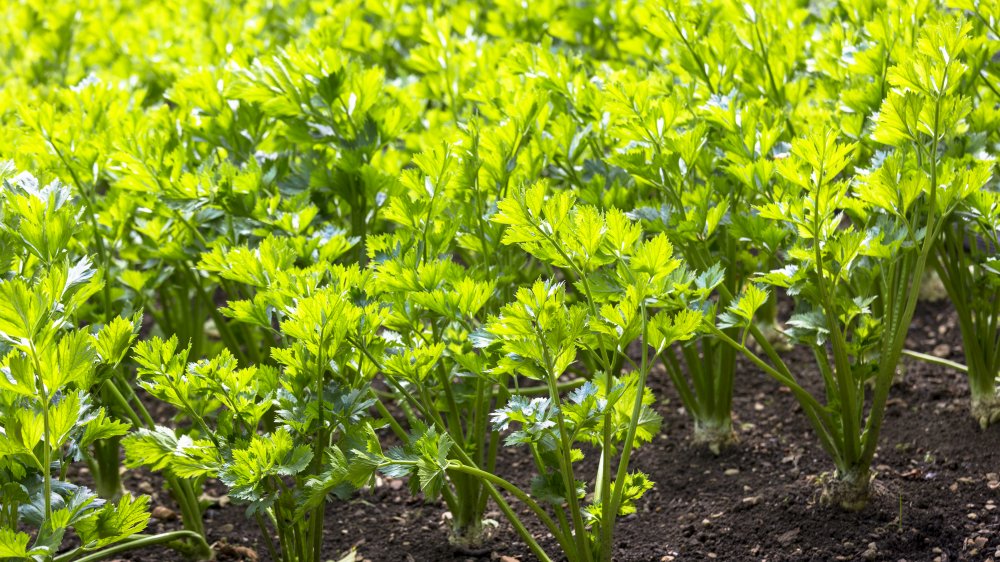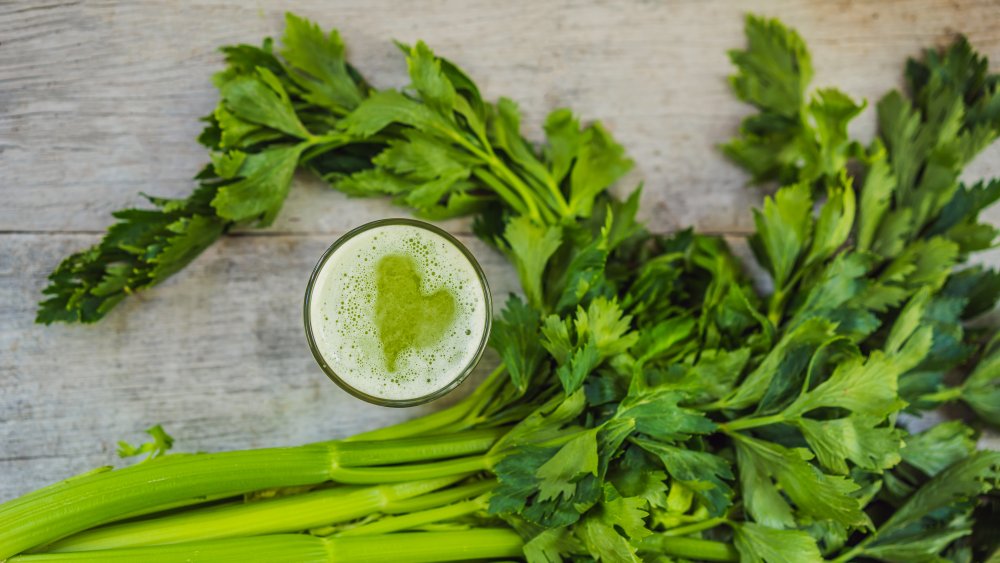The Real Reason You Should Be Saving Your Celery Leaves
Celery is consumed widely as both a snack and a cooking ingredient. But whether in a vegetable platter with other crudités or as part of a mirepoix (traditional French cooking base consisting of carrots onions and celery, according to Masterclass), it's the stalk that's getting all of the attention.
However, celery leaves can be used for a number of purposes as well, and they have the same nutritional value as the bottom half of the plant. Celery leaves are full of vitamin C, potassium, and calcium (via The Food Network). Because texture doesn't matter much when you're juicing a fruit or vegetable, celery leaves can be a great option to throw in the juicer if you're trying to add a green blast to a juice or smoothie. But perhaps the best use for celery leaves is in dishes where you're trying to impart a significant celery flavor.
The best way to use celery leaves
Turns out, the leaves of celery are actually more intensely celery flavored than the stalk of the plant (via Food Print). The same goes for the root of the plant, but that's a discussion for another time (via Rutland Co-op).
Celery leaves are a great addition to a soup or stock. Even if the recipe only calls for celery stalk (via Martha Stewart), you can either substitute leaves for the stalk or supplement the recipe with the leaves if you really enjoy celery flavor.
The optimal situation is to use them in a stock or soup that is strained, which will prevent you from having to fish around for the leaves with a fork. While it's not harmful by any means to consume them in a soup or stock, it's important to remember that they're being used for their flavor, not their texture.
The leaves can also be used as a salad garnish, but again, it's wise to be careful to use them in moderation because they can easily overwhelm the dish.

